911 Recordings
Hearsay is presumtively inadmissible. 911 tapes are generally admissible because they fall under the res gestae exception. Alternatively, 911 tapes may also be admitted because they meet the necessity and reliability requirements under the principled approach. We can use both res gestae and the principled approach to question the admissibility of the 911 tapes.
Res Gestae:
R v Sylvain 2014 ABCA 153
“The starting point is this. As a general principle, res gestae statements are admissible as an exception to the hearsay rule: R v Khan (1988), 42 CCC (3d) 197, 27 OAC 142 at para 21 (Ont CA) [Khan]; R v Ratten, [1972] AC 378 at 389-391 (PC). Res gestae as a category has been criticized as being an unhelpful generality that actually encompasses several discrete exceptions to the hearsay rule: David M. Paciocco & Lee Stuesser, The Law of Evidence, 6th ed (Toronto: Irwin Law, 2011) [Paciocco and Stuesser] at 173. That said, the particular exception involved here relates to “excited utterances” as explained by Paciocco and Stuesser, supra at 177:
A statement relating to a startling event or condition may be admitted to prove the truth of its contents if it is made while the declarant is under the stress of excitement caused by the event or condition.
[31] The rationale for admitting a statement in this category for the truth of its contents is that the stress or pressure under which the statement was made can be said to safely discount the possibility of concoction: see R v Klippenstein (1981), 26 AR 568 at para 17, 57 CCC (2d) 393 (Alta CA); R v Clark (1983), 42 OR (2d) 609 at 623, 7 CCC (3d) 46 (Ont CA); R v Slugoski (1985), 17 CCC (3d) 212 at 227, 43 CR (3d) 369 (BCCA). To avoid the prospect of fabrication, the statement should be reasonably contemporaneous with the alleged occurrence. However, exact contemporaneity with the event is not required: Clark, supra at 623; Khan, supra at para 25; R v Dakin (1995), 80 OAC 253 at para 20, 1995 CarswellOnt 4827 (CA).
[32] The excited utterances exception under the common law is also consistent with the principled exception to the hearsay rule: R v Mackenzie, 2011 ONSC 6770 at para 10, 2011 CarswellOnt 12578. The reliability of “excited utterances” comes from the absence of an opportunity to concoct a story. It is true that the mere making of a 911 call does not necessarily bring that call within the “excited utterances” exception. The defence might well argue, as it did here, that the fact the call was made is equally consistent with the fact it was concocted. That is why a trial judge must assess all the relevant evidence relating to the call, including the content, timing and circumstances of a 911 call, and determine whether in light of all the evidence, it properly falls within the “excited utterances” category.
R. v. DeSouza, [2012] O.J. No. 270 was a case where Ricchetti J. ruled in the course of pretrial applications, prior to the commencement of the jury trial, and importantly, on the basis of necessity, that the 911 tape was the best evidence of the state of mind of the complainant. However, he also acknowledged that there was no doubt that the statements made by the complainant during the 911 calls, being hearsay, would be inadmissible unless ruled to be spontaneous utterances or admissible under the principled approach exception to the hearsay rule. The key issue there was necessity and Ricchetti J. ruled that the statements were necessary.
[6] There are two basic requirements for a res gestae statement:
(1) there must be an occurrence or event sufficiently startling to render inoperative the normal reflective thought process of the observer, and
(2) the statement of the declarant must have been a spontaneous reaction to the occurrence or event, and not the result of reflective thought. The rationale for the exception lies in the special reliability that is provided when excitement suspends the declarant’s powers of reflection and fabrication. See McCormick on Evidence, 5th ed. (St. Paul: West Group, 1999) Vol. 2, 204.
Cases where 911 tapes were not admitted
When Prejudice exceeds probative value: For example “however, the contents of the tape and the high-end emotions, screams, and specific accusations of sexual assault that it reflects, makes clear to me that it’s very high prejudicial effect relative to what I regard as its very limited probative value cannot permit the 911 tape to be played. Perhaps the result would be different on a judge alone trial, but I have concluded that the risk of the jury giving undue weight to that recording and not just for the limited purposes for which it is sought to be admitted, but in a wider context relative to the case as a whole, means that it cannot be played in this case”. R. v. Kamal Barua, 2012 ONSC 1817
Where reliability not established:
The call here was not an emergency call. The fact that it was made to 911 is merely an accidental feature of the case. Further, the caller was not describing ongoing events – the call was made two hours and fifteen minutes after the incident had ended and two hours after the police investigation had commenced. In short, the circumstances that carried the hearsay in Chrisanthopoulos over the threshold reliability hurdle are not present here
R. v. Campbell, 2012 ONSC 6743
Concoctions:
I am also concerned there might have been a motivation for this call to achieve an
objective other than to report an assault. In this regard, it is noteworthy that Ms. Garrick
testified she and Mr. O’Connell were arguing that evening because her cat was dying and Mr.
O’Connell was not willing to spend money for its care. In cross-examination Ms. Garrick
also indicated that when she made the call, she wanted Mr. O’Connell out of the house. R. v. O’Connell, 2007 ONCJ 536
Motive to fabricate:
The 911 call was inadmissible. The 911 call was made 16 minutes after the offence. In addition, the evidence established that Mowatt acted deliberately and made the call because she was angry at Harbin. Furthermore, there was no oath or warning with respect to the statement and Mowatt had motive to fabricate when she placed the call. Therefore, the telephone call was not made as part of the res gestae and did not meet the test of reliability- R. v. Harbin
[2008] O.J. No. 2158
This would be the Crown’s only evidence against the accused. There is nothing else. The basis for admissibility is said to be that the complainant’s 911 call is a res gestae (excited or spontaneous utterance) statement, or alternatively that it constitutes an exception to the hearsay rule as being necessary and reliable. The defence opposes the admission of this evidence, adding that in the particular circumstances of this case, the probative value of this evidence, even if admissible, would be outweighed by its prejudicial effect. [5] I agree with the defence position that this evidence should not be admitted. First, I do not consider the 911 call to constitute a res gestae statement. Second, while the complainant’s statements to the 911 operator are necessary to the Crown’s case since the witness has no memory of making the 911 call, and denies that she was assaulted by the accused, they are manifestly unreliable; thus they are inadmissible as an exception to the hearsay rule. Finally, I would decline to admit the 911 call for a third reason: it would cause prejudice to the accused and the trial process; the prejudicial effect of the evidence is out of proportion to its probative value. The evidence is therefore ruled inadmissible. R. v. Grahovac, 2008 ONCJ 211
PRINCIPLED APPROACH
In R. v. Khelawon , (2006), 215 C.C.C. (3d) 161 the Supreme Court of Canada stated that where an established exception to hearsay does not apply to evidence that is sought to be adduced, it may be admissible if it is both reasonably necessary to admit the evidence and the evidence is sufficiently reliable. It is important to note that such evidence is presumptively inadmissible and that courts must find indicia of trustworthiness sufficient to displace the general exclusionary rule.
Necessity: R. v. Parrott. [2001] S.C.J. No. 4: Necessity cannot be assumed, it must be demonstrated. In this case, the court found that the
“Stereotypical assumptions about persons with disabilities, be it testimonial competency or trauma, should be avoided. The video of the complainant’s out-of-court statement could not afford evidence of any subsequent deterioration in her recollection of the events or her ability to communicate them. The trial judge having misdirected himself on the admissibility issue, his ruling must be set aside and the majority decision of the Newfoundland Court of Appeal ordering a new trial on the assault charge affirmed.”
In our case, we may question why more efforts have not been made to ensure the complainant’s presence in the court.
Reliability: The analysis here overlaps with what could be argued in challenging whether the 911 tapes on the facts properly belong to the res gestae exception. It would be useful to argue that while the 911 tapes were contemporaneous (an important part of the res gestae exception), there is a possibility that they may have been concocted….



